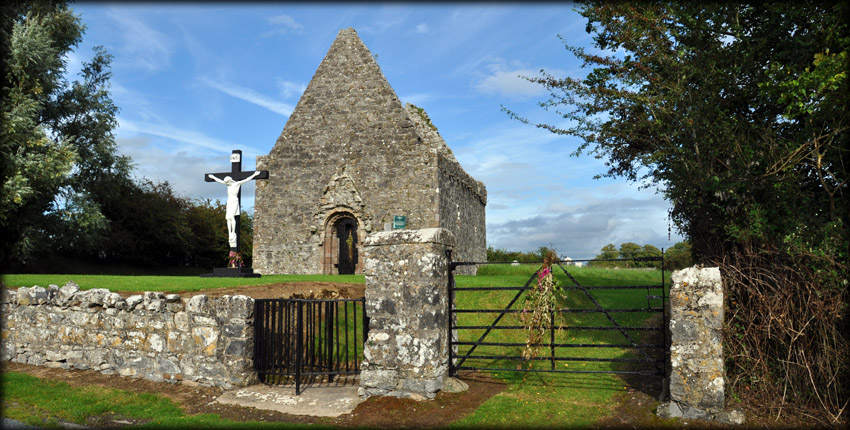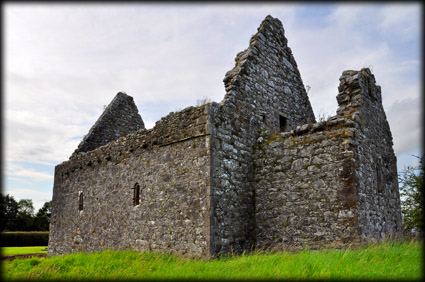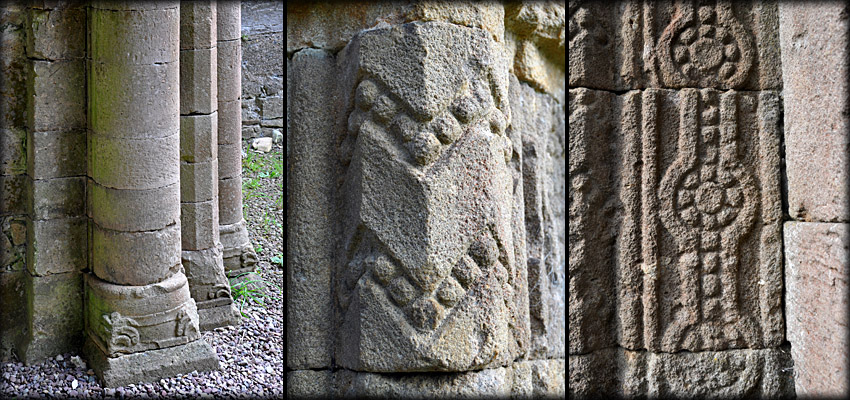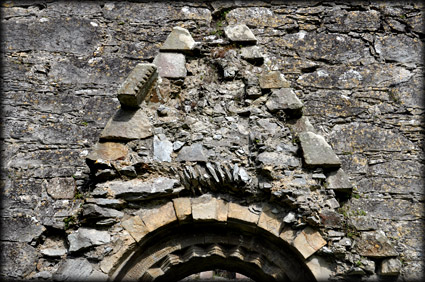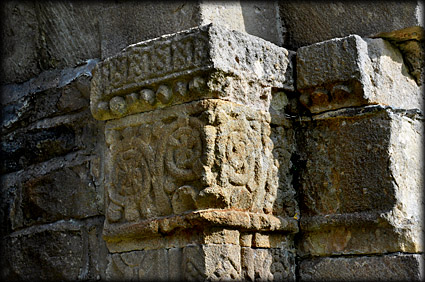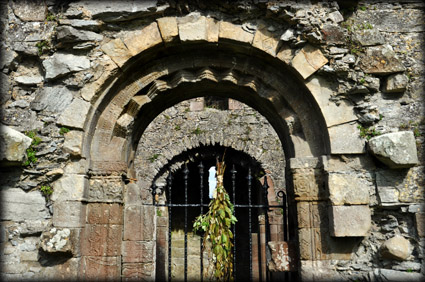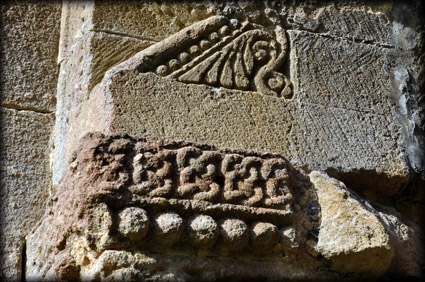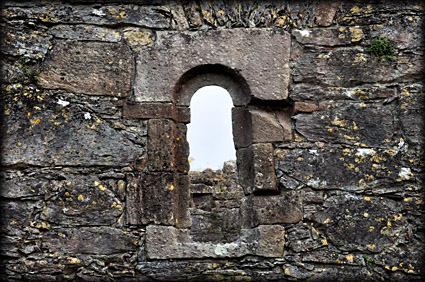Donaghmore Romanesque Church The name Donaghmore is from the Irish-Domhnach Mór, Domhnach meaning Church and Mór meaning Big. There are numerous townlands throughout Ireland named Donaghmore, they are usually associated with St Patrick. This 12th century Romanesque church was dedicated to St Farranan who had established an earlier church here. According to Burke in 1896 and Harbison in 1970, St Farranan was a 10th century Saint who had exiled himself to the Continent. Apparently he died at Valcoidon, which has since been renamed Waser on the Meuse, in 982. It has been a National Monument since 1883.
The church is constructed from limestone with sandstone quoins and architectural details. It consists of a 12 metre long, by 7.2 metre wide nave, with a small, internal 2.6x2.5 metre, chancel. The three order doorway is decorated in the romanesque style featuring roll-mouldings, beaded ornament and chevrons. A three order chancel arch has mostly collapsed, but the columns of the first two orders are almost complete. Pictured below are the plinths on the columns of the southside of the chancel arch and some decorative work on the man entrance in the west wall. |
|
|---|---|
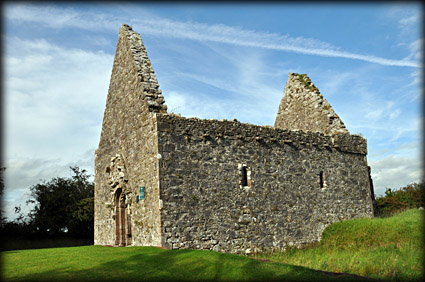 |
|
A tangential tympanum, see image below, above the doorway has almost disappeared. A carving of a cat with two tails, said to be carved by the legendary stonemason and builder 'An Goban Saer' was the central feature of the tympanum. It was believed to have been stolen and moved to Holycross about 200 years ago. The carving can now be found at the top of a stone archway leading to the grounds of the Swiss Cottage near Cahir. A series of water spouts, known as roof weepers, run along the base of a parapet on the north and south walls of the nave. The parapet was a later addition to the structure. I was unable to gain access to the interior of the interior of the church, so I am already looking forward to a return visit during the summer period. Please note: The ground in the graveyard behind the church, hidden under the long grass, is extremely uneven and can be quite hazardous. |
|
Tangential tympanum |
Decorated capital |
Arched doorway |
Romanesque decoration |
|
Situated: Driving west from Clonmel on the N24 take the third exit at the Cashel roundabout, turning onto the R688. Go about 1.5 kilometres, at the roundabout take third exit staying on the R688. After 2.1 k turn right, sign-posted Orchardstown. The church is on your right about 2.7 kilometres along this road. Discovery Map 74: S 1870 2908. Last visit Aug 2019. Longitude: 7° 43' 30" W Latitude: 52° 24' 47" N Photos: Jim Dempsey. |
